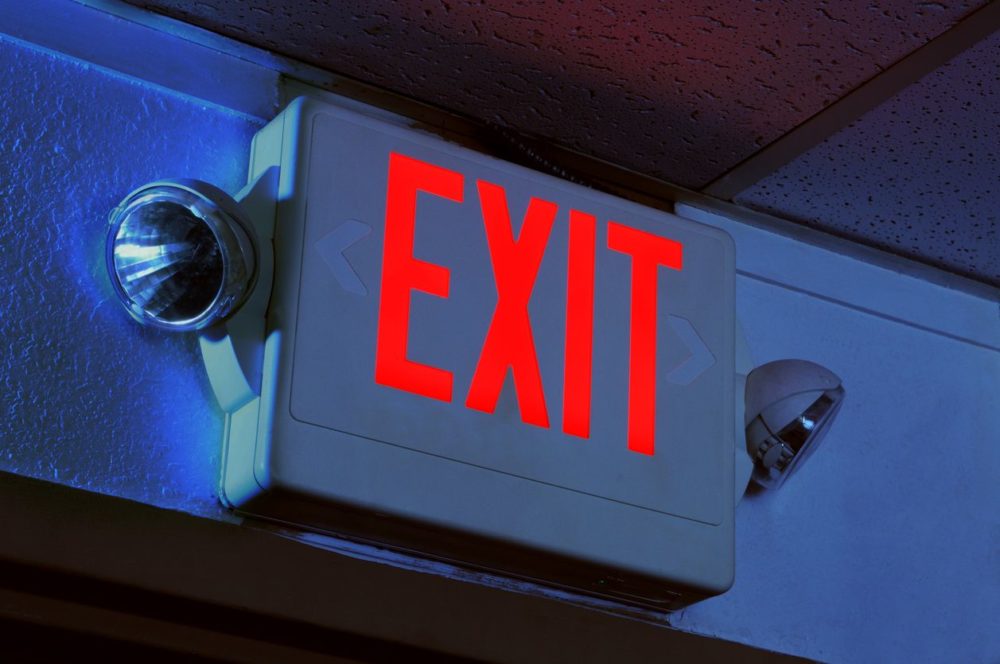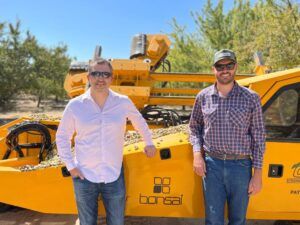Editor’s note: Bear Flag Robotics, an agtech startup focused on automation, has been acquired by John Deere for $250 million. Bear Flag Robotics was a portfolio company of agrifoodtech VC AgFunder, which is AFN’s parent company.
Here, AgFunder founding partner Rob Leclerc offers his insight into why Bear Flag Robotics will continue to be successful. Leclerc’s opinions are his own and do not necessarily reflect those of AFN.
When our portfolio company Bear Flag Robotics announced the close of its Seed round in January of this year, I was quoted in their press release saying that Bear Flag could be one of the most important companies in agriculture over the next decade. Today I’m doubling down on that claim after John Deere announced that it acquired the Californian agtech startup for $250 million.
Bear Flag is to tractors what $30 billion Cruise Automation is to cars, transforming everyday tractors into autonomous tractors. This is Deere’s second major automation acquisition in the past four years after Blue River, a more mature robotics company, that it bought for $305 million in 2017.
Autonomous equipment will be as transformative as mechanized agriculture. It’ll be the platform that will fulfill the promise of digital farming, which has struggled to drive value from insights alone. To create new value in digital-agtech, you need to connect insights to action and then run that loop at superhuman speeds. Robotics will be the key to unlocking this. By combining analytics with robotics and automation will allow us to monitor and grow each plant individually; it’ll reduce labor costs and enable economically viable regenerative agriculture practices; it’ll improve safety for one of the most dangerous professions on the planet; it’ll allow us to use fewer chemicals and fertilizers while reducing input costs. Robotics will benefit the small farmer who will be able to focus on high-value de-commoditized crops, and it’ll help large growers who will be able to do more with less while having less impact on the environment.
We first met Bear Flag’s founders Igino Cafiero and Aubrey Donnellan in the summer of 2018, and we had an opportunity to spend quite a bit of time with them just before Covid-19. When the pandemic hit, it was a scary time for many founders, especially those who were working in the world of atoms and who couldn’t easily work remotely. Raising capital in the middle of Covid wasn’t easy. Still, to Iginio and Auybrey’s credit, they closed an oversubscribed $7.9 million Seed round with us and several other intrepid investors, including True Ventures, Graphene, Alexandria Venture Investments, and D20 Capital.

When we invested, what I loved about Bear Flag was that they were solving the right problem. In robotics, I often see founders working on something too trivial and with no evident market pain. Or they’re working on something too hard. They vastly underestimate the challenges of making a robust and reliable technology that can navigate the variability of biology and dynamics of the environment. Ag robotics is 100x harder than building a robot with a few degrees of freedom that’s bolted to a floor in an environmentally controlled manufacturing plant performing a single operation on inert materials.
Bear Flag approached it the right way. First, they knew they didn’t need to make autonomous tractors; they just needed to make tractors autonomous by co-opting hardware from the driverless car industry — hardware that would have been prohibitively expensive five years ago. This allowed them to simplify the problem, limit CAPEX (VCs tend to hate CAPEX), and focus on the software and application layer.
Second, although Bear Flag had enormous ambitions for autonomy, their go-to-market started with tillage for high-value crops like lettuce, which is farmed almost year-round in California. In comparison to planting or spraying, tillage may seem boring–but that’s the genius part (and a lot of VC passed on Bear Flag because they only saw a small market and not the bigger picture). It’s really really easy to mess up a field planting and spraying, but tillage is something farmers are happy to hand over to a robot because you can’t do a lot of damage, and it’s tedious. And, unlike human drivers, autonomous tractors can run 24/7, which lets farmers get more turns out of their field, allowing them to grow more with the same land. Going from 2.4x rotations/year to 2.8x rotations from the same field can significantly improve margins for growers.
For farmers evaluating this solution, the risk is low while the benefit’s high, which helps build trust and overcome adoption issues experienced by many agtech ventures.
And by initially focusing on high-value crops in California, Bear Flag could get lots of reps in with a few large enterprise customers like Church Brothers, who till parts of their fields almost every day of the year. This enabled Bear Flag to increase the learning rate and the number of iterations it could make to the technology.
But what got me most excited about Bear Flag was the feedback from the customer calls. One large enterprise client told us that Bear Flag was the only agtech startup they never had to worry about, and the team would turn around a new solution in weeks when the client expected it to take a year. They also told us neighboring farmers would see the Bear Flag tractor in the field and would come by to ask questions–it was going to be a product that would sell itself.
We’re incredibly excited about automated agriculture. Aside from Bear Flag, we’ve invested heavily into several exceptional robotics teams inventing the future of farm automation, including Root AI, a greenhouse harvesting robotics startup that was acquired by AppHarvest in April; Verdant Robotics, an autonomous spraying system for high-value crops; and Tevel Robotics, which uses a mob of electrically-tethered drones to harvest apples and other fruit trees. More tertiary to this, we’ve also invested in drone mapping companies Sentera (row crops) and Aerobotics (tree crops), as well as Solinftec and FieldIn, which are both applying process automation to farming. These will be critical pieces to close the digital loop, and robotics will further unlock this value.
While companies like John Deere produce some of the best heavy machinery globally, developing robotic solutions takes different DNA. And while the initial progress of robotics startups may seem slow from the outside, the slog is precisely what will make them so valuable; fast-following is so hard because your systems need to learn on the job, and by the time people realize this, there will only be a few crucial players in the market. Bear Flag won’t be the last significant acquisition we see in ag robotics and automation, and in a decade from now, I expect all the major equipment companies, first and foremost, to be automation companies.
Read more AFN coverage about food & ag robotics here




